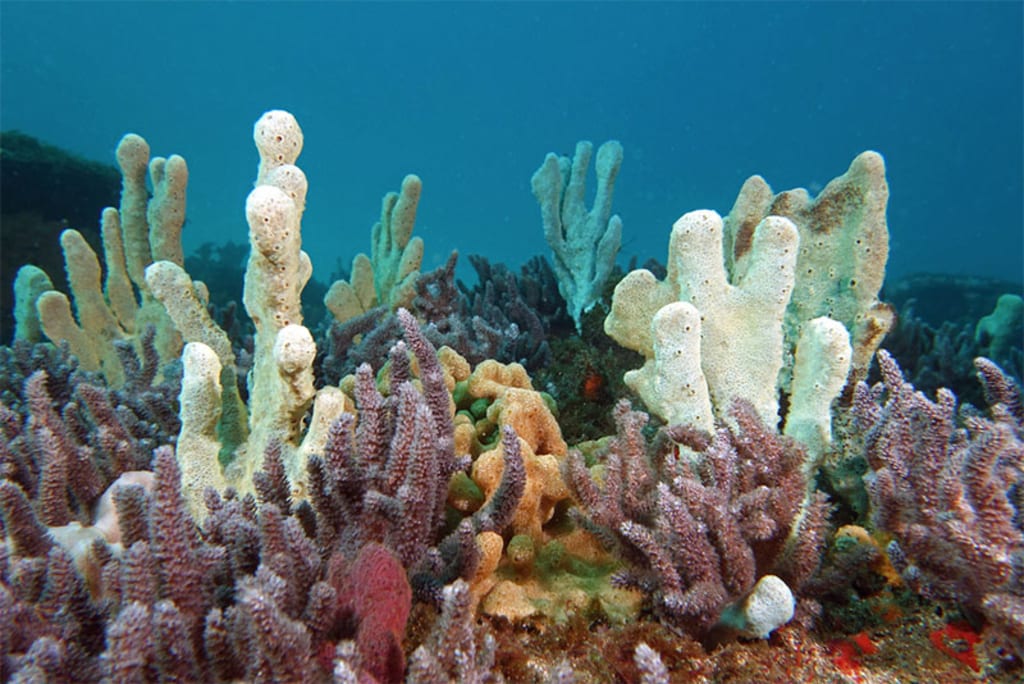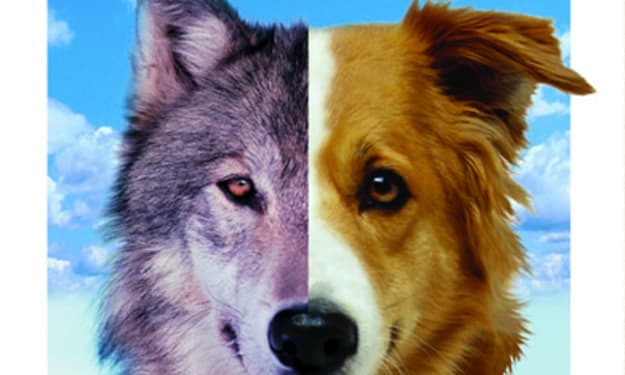
Porifera, more commonly known as sponges, are the only phylum belonging to the subkingdom Parazoa. These simple creatures are among the least evolutionarily advanced animals in the world. Although they may lack complexity, this group of animals are evidently extraordinarily successful, having been able to continue survival, successfully passing on their genes for over six hundred million years. Their unique feeding system and lack of digestive, circulatory, and nervous systems are some of the factors that differentiate them from any other animal.
Sponges are primarily marine animals and consist of loosely organized cells. They possess two ‘tissue” layers which are actually not made up of any true tissues at all. The outer layer of a sponge is lined with flattened polygonal cells called pinacocytes. These layers are separated by the mesohyl which contains amoeboid cells. These special cells form needle-like spikes called spicules that are what give the sponge its structure. The inner layer consists of flagellated cells called collar cells, or choanocytes. The sponge body is covered with ostia, or pores. The choanocyte flagella help to create a flow of water from ostia through the sponge body oscules, while the collar help to filter in tiny food particles such as plankton and small bits of microscopic organic matter from the water. After food is digested in ameboid archaeocytes, the leftover waste products are carried out through the osculum, located at the top of the organism. With their lack of organs or any type of complex structure, this canal system is the most effective way for the sponge to obtain the nutrients it needs while still maintaining sessile.
Sponges typically have one of three body types: ascon, sycon, and leucon. Ascon are tube shaped and symmetrically aligned. In this body type, the typical system is carried out. As mentioned earlier, the ostia lead to the spongocoel chamber and water is guided through by the flagella and through the ostia. Water exits normally through the Osculum. In the Sycon body type, we see something slightly different. There are folds along the sponge wall with a more irregular shape, while still maintaining radial symmetry. Water enters a Sycon sponge through dermal pore openings. Pores in the body wall connect incurrent canals to radial canals. The radial canals then lead to spongocoeal. Radial canals are lined with choanocytes, and the flagella moves water from the ostia, through radial canals, to the spongocoel, and out through the Osculum. In the last structure, leucon, there is an extensively folded wall with very irregular non-symmetrical shape and branching systems throughout. Water flows through the sponge through the ostia and moves throughout the branched incurrent canals. Proliferation of chambers and canals has led to the absence of a spongocoeal, and there is often the presence of multiple oscula for exiting water.
Reproduction in sponges can occur both sexually and asexually. Asexual reproduction occurs by what is known as budding or fragmentation. In budding, an outgrowth from the parent emerges and will eventually detach, each bud developing into a new individual. Freshwater sponges can form resistant structures called gemmules. Gemmules are groups of clustered cells surrounded by a hard outer layer of spongin fibers. Gemmules can withstand hostile environments and conditions such as drying or cold and later develop into new individuals. As stated before sexual reproduction can also occur in sponges as well. Although most sponges are hermaphroditic, meaning one individual can possess the ability to produce both eggs and sperm, they do not typically self-fertilize. The sperm is ejected through the osculum and carried away through water currents, making their way to fertilize another sponge. After larvae is well developed enough, it is released to swim freely using it’s flagella. This is the only time in the life of a sponge that it will possess any kind of mobility. After settling and attaching to a suitable substrate, the larvae then develop into young sponges and will remain sessile for the rest of it’s life.
Clearly Porifera are extraordinary animals. The history behind the evolution of sponges has even played a major role in the scientific discovery of the origin of animals. Despite their simple structures, their amazing ability to survive throughout so many years of evolution and extinction happening all around them, proves just how well adapted they are to their environment. Sometimes the less complex, the better.






Comments
There are no comments for this story
Be the first to respond and start the conversation.